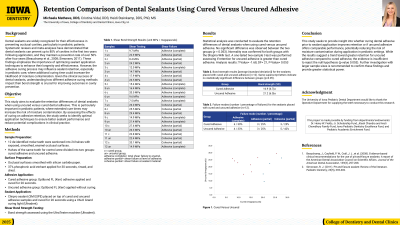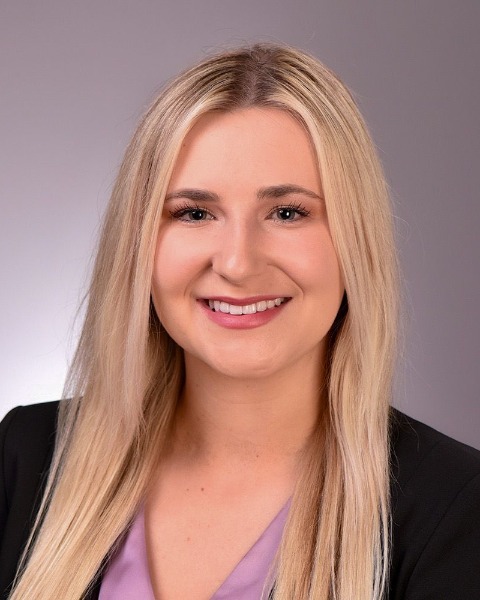Restorative
335 - Dental Sealant Retention: Cured Versus Uncured Adhesive


Michaela Mathews, DDS (she/her/hers)
Resident
University of Iowa, Iowa City, IA
University of Iowa
Mount Pleasant, Iowa, United States- CV
Cristina Vidal, DDS
University of Iowa
Iowa City, Iowa, United States - HS
Heidi Steinkamp, DDS PhD MS
University of Iowa College of Dentistry
Iowa City, Iowa, United States
Presenting Author(s)
Research Mentor(s)
Program Director(s)
Purpose: To evaluate the retention differences of dental sealants when using uncured versus cured dental adhesive. The aim is to determine if an uncured adhesive can improve retention while minimizing moisture contamination risk, especially in pediatric applications.
Methods: Twelve extracted molar teeth were bisected into 24 samples. The occlusal surfaces were etched with 37% phosphoric acid for 30 seconds, rinsed, and dried. Samples were divided into two groups: cured adhesive (Optibond cured for 20 seconds) and uncured adhesive (Optibond applied without curing). Clinpro sealant was applied to both groups and cured for 20 seconds. Shear bond strength, measured in megapascals (MPa), was tested to assess retention.
Research supported by: Dr. Henry W. Fields, Jr. Scholarship Fund, Jitesh Chandra and Arati
Results: Retention differences between cured and uncured adhesives were analyzed. Normality was confirmed via the Shapiro-Wilk test (P >.100). A one-tailed, two-sample t-test produced the following:
P-Value: .053. A two-tailed, unpaired t-test produced the following:
P-Value: .106.
Conclusion: Although uncured adhesive demonstrated a trend towards higher retention, the evidence is not statistically significant. Further research with larger samples is advised with possible implementation of thermocycling.
Identify Supporting Agency and Grant Number:
Chowdhury Family Fund, Iowa Pediatric Dentistry Excellence Fund, and
Pediatric Academic Enrichment Fund.

.jpg)